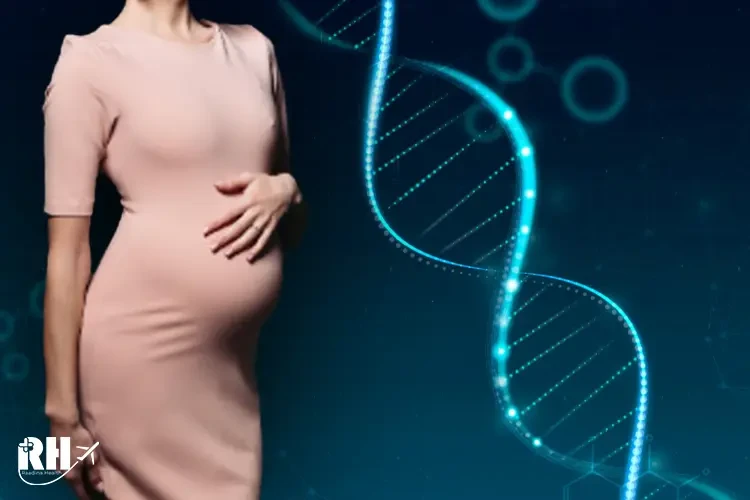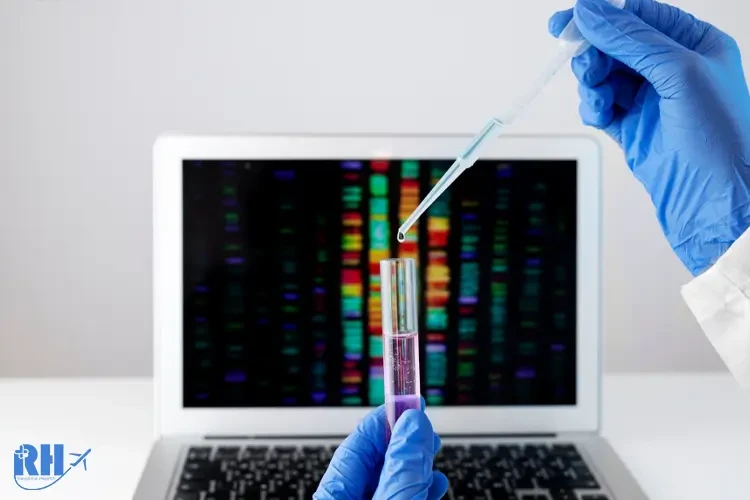Surrogacy is a safe infertility treatment where another woman carries a baby for intended parents, but many couples wonder if the child will resemble the surrogate or inherit her DNA. When the embryo is created with the parents’ own egg and sperm, the baby’s genetics come only from them, not the surrogate. With advanced IVF and genetic testing in Iran, couples can ensure healthy pregnancies, choose the best embryos, and even manage gender selection.
Genetic testing in surrogacy plays a crucial role in ensuring a healthy baby by detecting inherited and chromosomal disorders before and during pregnancy. Through IVF surrogacy, preimplantation tests such as PGD, PGS, and PGT-SR allow doctors to select the healthiest embryos, while prenatal screenings like amniocentesis, CVS, and NIPT further monitor the baby’s development.
In IVF surrogacy, the baby’s DNA comes entirely from the egg and sperm of the biological parents (or donors), meaning the surrogate mother does not share DNA with the baby unless she also provides the egg. While minimal cell transfer may occur through the placenta and the surrogate’s lifestyle can influence gene expression, these factors do not alter the child’s genetics.
In surrogacy, the baby inherits all genetic traits from the biological parents (egg and sperm providers), not the surrogate mother. The surrogate only provides a nurturing womb environment that may influence gene expression through epigenetics, affecting aspects like growth, weight, or temperament, but not facial features or genetic resemblance. If the intended mother’s egg is used, the child will fully resemble the biological parents, while with donor eggs, 50% of the traits come from the donor. Therefore, the baby will never look like the surrogate unless she is also the egg donor.
Surrogacy brings hope to infertile couples but poses unique psychological challenges for surrogate mothers, including social stigma, legal uncertainty, hormonal changes, and emotional attachment to the baby. To protect both mother and child, continuous mental health care is essential through counseling, emotional support, stress management, proper rest, and a pregnancy diet.
Surrogacy babies have several safe feeding options, including breastfeeding by the surrogate, infant formula, or donor milk. However, the best choice is often breastfeeding by the intended mother through induced lactation. With modern medical methods, even women who haven’t experienced pregnancy can breastfeed, giving their baby the same nutrition, immunity, and emotional bonding benefits as natural breastfeeding.
Surrogacy is a modern fertility treatment in which embryos created through IVF are carried by a surrogate mother, offering hope to couples struggling with infertility. This process requires strict medical care, a healthy lifestyle, emotional support, and a clear legal contract to protect all parties. While surrogacy carries risks such as gestational diabetes, preeclampsia, and preterm delivery, proper care ensures safe outcomes.
Surrogacy in Egypt: A Conflict Between Religious Beliefs and Advancements in Reproductive Technology
Surrogacy is illegal in Egypt due to strong opposition from religious scholars who view it as clashing with Islamic law. There are no specific laws banning or supporting surrogacy, making it effectively prohibited. Cultural pressures, especially on women, to have children, increase the demand for surrogacy. Therefore, many infertile Egyptian couples pursue the treatment in other countries like Jordan, Lebanon, and Iran.
Surrogacy in China has been officially illegal since 2001; however, Chinese underground clinics continue to operate due to rising infertility rates, lax enforcement in some regions, and increasing social pressure to have children in the country. The practice raises serious ethical problems, especially regarding the potential exploitation of poor and uneducated women. It also may lead to legal risks for both surrogate mothers and intended parents, particularly in custody issues. Public opinion on surrogacy is mixed in China; some see it as a hopeful option, while others believe it is morally wrong. As a result, many Chinese couples seek surrogacy abroad in countries like Iran, where the process is legal and more affordable.
In Iran, surrogacy is carried out under specific religious and legal frameworks and is only permitted under legal conditions and the supervision of fertility centers. This method allows infertile couples to have a child, but adherence to the legal and religious regulations for the donor, surrogate mother, and the intended family is essential. This article examines the laws, medical procedures, and necessary conditions for surrogacy in Iran, providing prospective parents with the information needed to make informed decisions.









